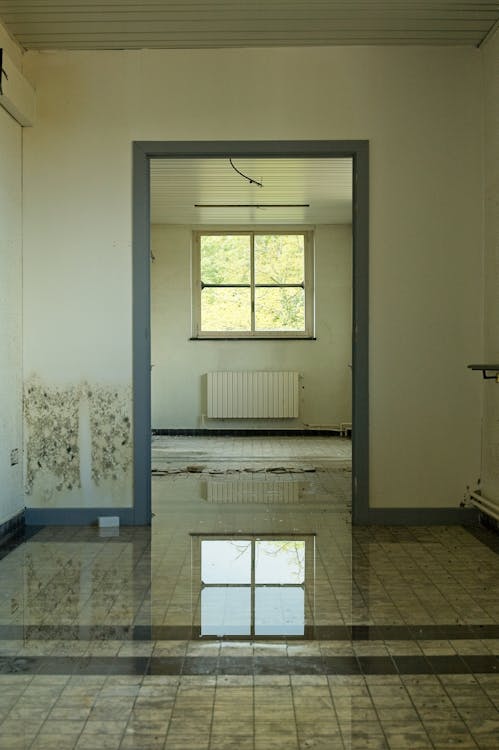Maintaining a safe and healthy home environment is paramount for the well-being of its occupants. One of the often-overlooked threats to home safety is mold growth, which can have serious health implications and cause substantial structural damage. Mold thrives in moist and humid conditions, making bathrooms, basements, and other damp areas potential hotspots. A thorough mold inspection is crucial in identifying the presence of mold spores and preventing their spread. By understanding the importance of mold inspections and implementing them regularly, homeowners can protect both their property and their family’s health.
Professional Mold Inspection Services
While homeowners can perform basic checks for mold growth, enlisting professional mold inspection services provides a more comprehensive evaluation. Certified inspectors are trained to detect even the most elusive colonies using advanced tools and techniques. These professionals can identify specific mold types, assess the extent of contamination, and determine the necessary remediation measures.
Professional inspections often include air quality testing, providing insights into potential spores in circulation that are invisible to the naked eye. By choosing professional services, homeowners ensure a thorough investigation, leading to more effective and lasting mold control solutions, and ultimately safeguarding their property and health against future outbreaks. By solving mold problems early on, homeowners can also save significant costs down the line. It’s a small price to pay for peace of mind.
Understanding the Causes of Mold Growth
Mold thrives in environments where moisture is prevalent, making it essential to understand the conditions that promote its growth. Leaky pipes, inadequate ventilation, and condensation are common contributors. Mold can begin to develop within 24 to 48 hours in a damp environment, highlighting the importance of prompt action to resolve any water issues in the home.

Understanding the sources of moisture and how they contribute to mold growth can be the difference between a healthy home and one plagued with this unwanted fungus. Regular maintenance checks and addressing minor leaks immediately can mitigate long-term damage and prevent mold infestations.
Health Implications of Mold Exposure
Exposure to mold can lead to a variety of health problems, ranging from mild respiratory issues to severe allergic reactions. Individuals with asthma, allergies, or weakened immune systems are particularly susceptible. Symptoms of mold exposure may include coughing, nasal congestion, sneezing, and, in some cases, skin rashes.
Long-term exposure to mold can exacerbate health issues, particularly in vulnerable populations such as the elderly and young children. Understanding these health risks underscores the importance of regular mold inspections and proactive management strategies to minimize exposure in the home.
Conducting a Thorough Mold Inspection
A comprehensive mold inspection involves more than just a superficial glance at potential problem areas. It requires carefully examining the entire home, including less accessible areas such as behind wallpaper, in HVAC systems, and under flooring. Professional inspectors often use specialized equipment to detect hidden mold, ensuring no area is left unchecked.
Post-inspection, homeowners receive a detailed report highlighting problem areas and recommended remediation steps. These assessments can guide effective mold removal and inform preventative measures, contributing to a healthier home environment.
Effective Mold Remediation Techniques
Once the mold is detected, it is crucial to eliminate it effectively to prevent recurrence. Remediation techniques often involve cleaning and drying all affected areas, removing contaminated materials, and potentially using chemical treatments. Hiring professionals with expertise in mold remediation ensures the process is handled safely and effectively.
It’s also important to identify and rectify the underlying cause of the moisture issue to prevent future growth. Whether it requires fixing a plumbing problem or improving ventilation, addressing these root causes is integral to successful mold remediation.
Preventative Measures for Long-term Mold Control
Proactive prevention is the best strategy for keeping mold at bay. Ensuring proper ventilation, particularly in moisture-prone areas like bathrooms and kitchens, reduces humidity levels. Utilizing dehumidifiers and maintaining HVAC systems can also aid in controlling moisture levels throughout the home.

Regular home maintenance, including routine checks for leaks and ensuring proper drainage away from the home, is vital. By taking these preventative measures, homeowners can maintain a mold-free environment, safeguarding both their property and health for the long term.
Signs of a Mold Infestation
Identifying signs of a mold infestation early can significantly reduce damage and health risks associated with mold exposure. Common indicators include musty odors, visible mold spots, and water damage in areas prone to moisture buildup. Discoloration on walls or ceilings, warping of building materials, and deterioration of surfaces may also signal mold presence.
Paying attention to these warning signs allows homeowners to take timely corrective actions. If mold is suspected, it is advisable to conduct a thorough inspection as soon as possible to prevent further spread and address any underlying moisture issues.
Mold inspections play a crucial role in maintaining a safe and healthy home environment. By understanding the causes of mold growth, recognizing its health implications, and implementing preventative measures, homeowners can safeguard their property and family’s well-being. Regular mold inspections and remediation efforts are essential steps toward creating a comfortable and hazard-free living space for all.



